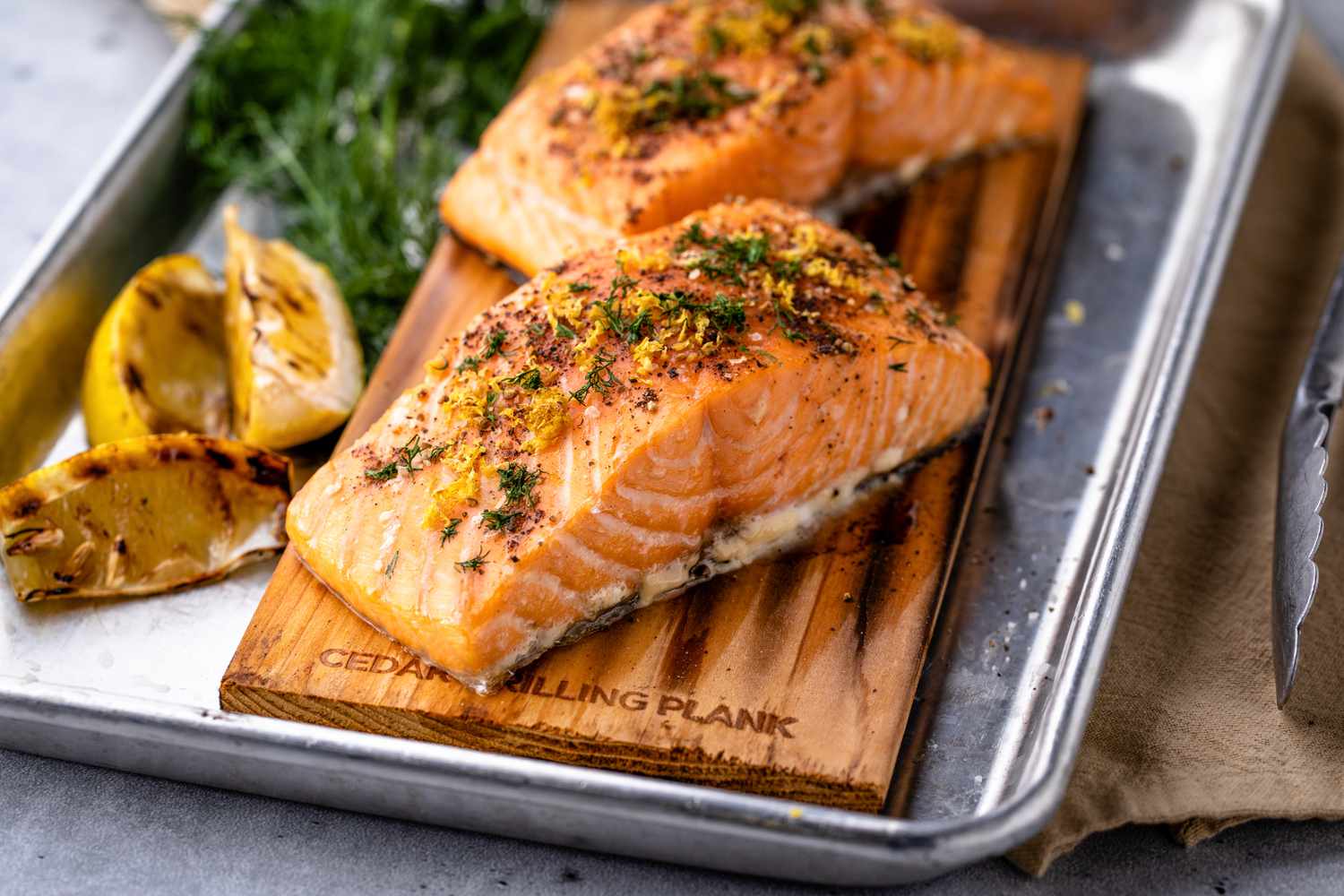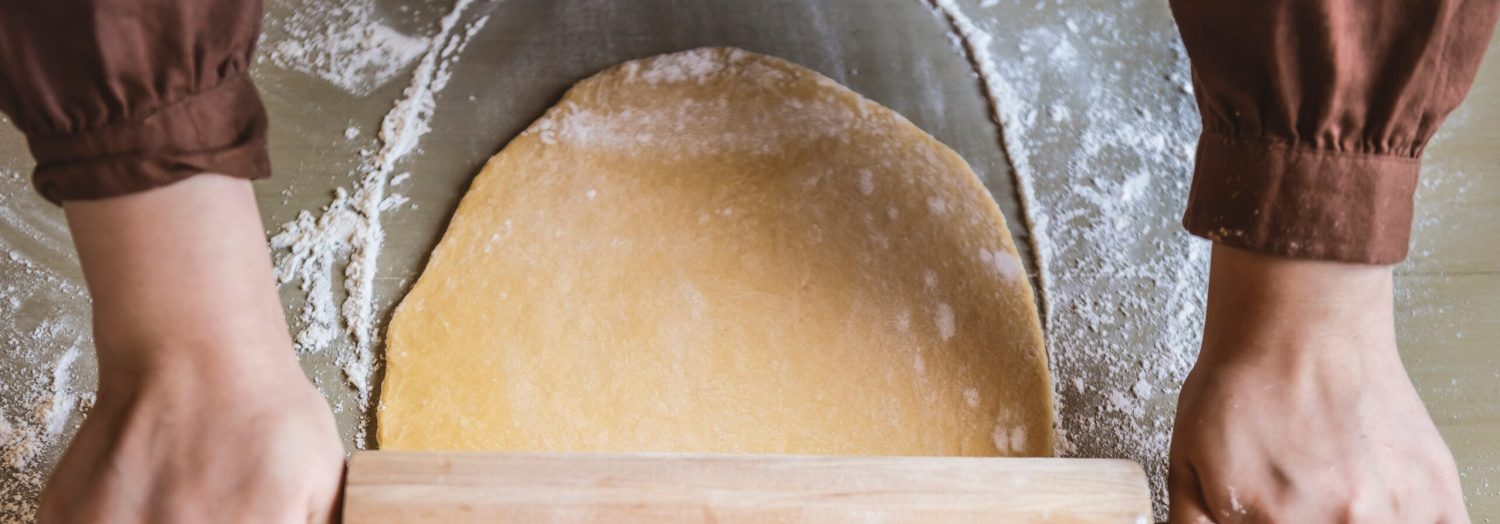Experience the delightful flavors of cedar planked salmon with this easy-to-follow recipe. The unique method of cooking on a cedar plank infuses the salmon with a subtle, smoky aroma that pairs perfectly with the simple seasoning. This dish is perfect for a summer barbecue or a special dinner at home.
One ingredient you might not have readily available at home is the cedar plank. These can be found in the grilling section of most supermarkets or specialty cooking stores. Make sure to choose a food-safe plank specifically designed for cooking. The rest of the ingredients, such as salmon, olive oil, salt, black pepper, lemon juice, and garlic, are common pantry staples.

Ingredients For Cedar Planked Salmon Recipe
Salmon: A rich, flavorful fish that is the star of this dish.
Olive oil: Adds moisture and helps the seasoning adhere to the salmon.
Salt: Enhances the natural flavors of the salmon.
Black pepper: Adds a hint of spice and depth to the seasoning.
Lemon juice: Provides a fresh, tangy contrast to the rich salmon.
Garlic: Adds a robust, aromatic flavor to the dish.
Cedar plank: Infuses the salmon with a subtle, smoky aroma during grilling.
Technique Tip for This Recipe
To enhance the flavor of your salmon, consider adding a marinade before grilling. Mix olive oil, lemon juice, minced garlic, and a touch of dill or thyme in a bowl. Let the salmon fillet soak in this mixture for about 30 minutes before placing it on the cedar plank. This will infuse the fish with even more aromatic flavors, making each bite a delightful experience.
Suggested Side Dishes
Alternative Ingredients
salmon fillet - Substitute with trout fillet: Trout has a similar texture and flavor profile, making it a suitable alternative for cedar plank cooking.
olive oil - Substitute with avocado oil: Avocado oil has a high smoke point and a mild flavor, making it a good substitute for olive oil in grilling recipes.
salt - Substitute with sea salt: Sea salt can provide a similar level of seasoning with a slightly different mineral content that can enhance the flavor.
black pepper - Substitute with white pepper: White pepper offers a similar heat and flavor but with a slightly different aroma, which can add a unique twist to the dish.
lemon juice - Substitute with lime juice: Lime juice provides a similar acidity and citrus flavor, making it a good alternative for adding brightness to the salmon.
garlic - Substitute with shallots: Shallots offer a milder, sweeter flavor compared to garlic, which can add a different but complementary taste to the salmon.
Other Alternative Recipes
How to Store or Freeze This Dish
Allow the salmon to cool completely before storing. This helps prevent condensation, which can make the fish soggy.
Wrap the salmon fillet tightly in plastic wrap or aluminum foil. This will help maintain its moisture and prevent it from absorbing any unwanted odors from the fridge.
Place the wrapped salmon in an airtight container. This adds an extra layer of protection and helps keep the fish fresh.
Store the salmon in the refrigerator for up to 3 days. For the best flavor and texture, consume it within this timeframe.
If you plan to freeze the salmon, wrap it in plastic wrap or aluminum foil first, then place it in a freezer-safe bag or container. This double-wrapping method helps prevent freezer burn.
Label the container with the date. This will help you keep track of how long the salmon has been stored.
Freeze the salmon for up to 3 months. While it can be stored longer, the quality may start to decline after this period.
When ready to use, thaw the salmon in the refrigerator overnight. Avoid thawing at room temperature to prevent bacterial growth.
Reheat the salmon gently in the oven at a low temperature or in a skillet over medium heat. This helps retain its moisture and flavor.
Consider adding a splash of lemon juice or a drizzle of olive oil when reheating to refresh the flavors.
How to Reheat Leftovers
Oven Method: Preheat your oven to 275°F. Place the salmon on a baking sheet lined with parchment paper. Cover it loosely with aluminum foil to retain moisture. Heat for about 15 minutes or until warmed through. This method helps maintain the salmon's delicate texture.
Stovetop Method: Heat a non-stick skillet over medium-low heat. Add a small amount of olive oil or butter to the pan. Place the salmon skin-side down and cover with a lid. Heat for about 5-7 minutes, checking frequently to avoid overcooking. This method is quick and keeps the salmon moist.
Microwave Method: Place the salmon on a microwave-safe plate. Cover it with a microwave-safe lid or another plate to trap steam. Microwave on medium power for 1-2 minutes, checking halfway through. Be cautious, as microwaving can sometimes dry out the salmon.
Steam Method: Fill a pot with a small amount of water and bring it to a simmer. Place the salmon in a steamer basket over the simmering water. Cover and steam for about 5 minutes or until heated through. This gentle method helps retain the salmon's moisture and flavor.
Air Fryer Method: Preheat your air fryer to 300°F. Place the salmon in the air fryer basket and heat for about 4-5 minutes. This method is quick and can give the salmon a slightly crispy exterior while keeping the inside tender.
Best Tools for This Recipe
Cedar plank: A wooden plank used to impart a smoky flavor to the salmon as it grills.
Grill: A cooking device that uses direct heat to cook food, perfect for achieving a smoky, charred flavor.
Tongs: A tool used to handle the salmon and cedar plank safely on the grill.
Basting brush: Used to apply olive oil evenly over the salmon fillet.
Measuring spoons: Essential for accurately measuring the salt, black pepper, and lemon juice.
Knife: Used to mince the garlic cloves finely.
Cutting board: A surface to safely chop and prepare the garlic and other ingredients.
Small bowl: Used to mix the olive oil, salt, and black pepper before applying to the salmon.
Timer: Helps keep track of the grilling time to ensure the salmon is cooked perfectly.
Spatula: Useful for lifting and serving the salmon once it’s cooked.
How to Save Time on This Recipe
Pre-soak the plank: Soak the cedar plank the night before to save time on the day of cooking.
Pre-mix seasoning: Combine olive oil, salt, and black pepper in advance to quickly rub on the salmon fillet.
Pre-mince garlic: Mince the garlic ahead of time and store it in the fridge to save prep time.
Preheat grill: Start preheating the grill while you prepare the salmon to ensure it’s ready to go.
Use a timer: Set a timer for the grilling process to avoid overcooking and multitask efficiently.

Cedar Planked Salmon
Ingredients
Main Ingredients
- 1 lb salmon fillet
- 2 tablespoon olive oil
- 1 teaspoon salt
- 1 teaspoon black pepper
- 1 tablespoon lemon juice
- 2 cloves garlic, minced
Instructions
- Soak the cedar plank in water for at least 1 hour.
- Preheat your grill to medium-high heat.
- Rub the salmon fillet with olive oil, salt, and black pepper.
- Place the salmon on the soaked cedar plank.
- Grill the salmon on the cedar plank for about 20 minutes, or until the salmon is cooked through.
- Drizzle with lemon juice and sprinkle minced garlic on top before serving.
Nutritional Value
Keywords
Suggested Appetizers and Desserts
More Amazing Recipes to Try 🙂
- Caramel Corn Recipe1 Hours
- Egg Noodles Recipe30 Minutes
- Microwave Scrambled Eggs Recipe3 Minutes
- Basic Bechamel Sauce Recipe20 Minutes
- Mac and Cheese Recipe30 Minutes
- Air Fryer Grilled Cheese Sandwich Recipe15 Minutes
- Hot Brown Recipe45 Minutes
- Lemon Curd Recipe20 Minutes


Leave a Reply